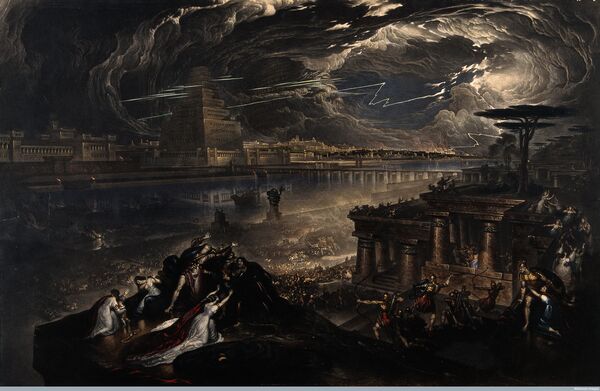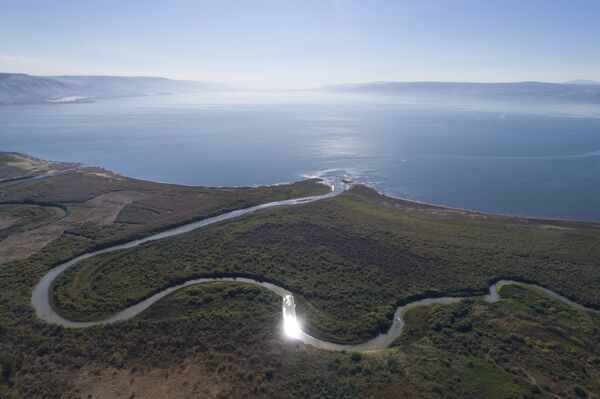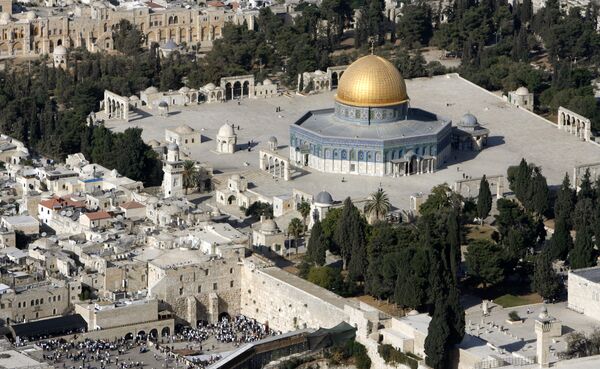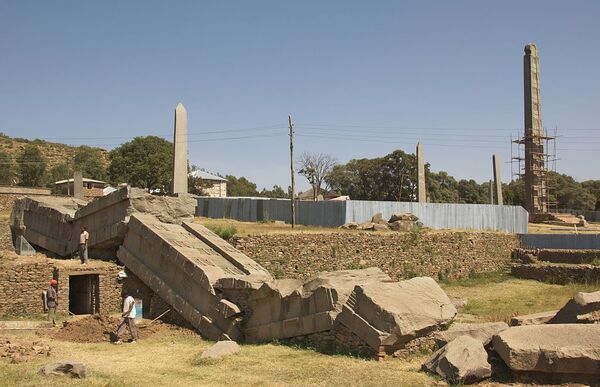The long-lost Ark of the Covenant made it into the news again late last year after archeologists from Tel Aviv University uncovered a large stone table among the ruins of a temple in the town of Beit Shemesh, about 20 km west of Jerusalem, on which they believe the Ark was once stored before being transferred to Jerusalem in the 10th century BC.
It is thought that the ruins of the temple at Beit Shemesh may have been an attempt by King David of Judah to find a permanent place for the Ark. King Solomon, David’s son and successor, who ruled the United Kingdom of Israel between 970 and 931 BC, placed the Ark in a small room in the Temple on Mount Zion in Jerusalem, forbidding anyone except for men of the cloth to be in its presence. About three centuries later, the Ark disappeared, with debates about its location (and even about whether it still exists) continuing to this day. Below is a summary of the debate, compiled by Russian journalist and religious researcher Anton Skripunov:
- The last recorded mention of the Ark dates back to 622 BC, when King Josiah told men of the cloth that there was no longer any need to carry the holy artifact around on display to show ordinary believers. According to legend, the Ark disappeared from Jerusalem before King Nebuchadnezzar of Babylon destroyed the city in 586 BC and led the Jews away to Babylon. Mysteriously, however, the relic was never mentioned in the list of items seized by the Babylonians, nor was it among the items returned to Jerusalem by Persian King Cyrus the Great a century later. It is known that since its restoration, the Temple of Jerusalem has remained empty.
- According to biblical legend, the Temple built by King Solomon was destroyed because the Jews turned away from the worship of the one true God during the 55-year reign of Manasseh of Judah, who propagated the cult of Phoenician deity Baal and the Babylonian Goddess Ishtar.

- The Judeans’ ‘sin of apostasy’ was spoken about by the Prophet Jeremiah, who according to legend gained possession of the Ark and hid it in a cave at Mount Nebo, beyond the River Jordan. But the cave was not marked, leading to the Ark’s loss. This story appears in the Second Book of Maccabees, and prompted Franciscan monks to carry out a large-scale search for the shrine in the 1930s. Commenting on this expedition, Jordanian archeologist Rustom Mkhjian recalled that the monks “searched for the grave of the Prophet Moses, and the Ark of the Covenant, but to no avail. Instead, they uncovered several 6th-7th century Byzantine temples with unique mosaics.”
- However, other historians have doubts about the account. The Books of Maccabees were not included in the Hebrew Bible, and the story of Jeremiah and the Ark appeared only with the compilation of the Second book of Maccabees in about the second or first century BC.

- An alternative account, proposed by individuals including Shlomo Goren, a 20th century Orthodox Zionist rabbi and Talmudic scholar, suggested that the Ark never left Jerusalem at all, but remains hidden under the Temple Mount. In end times, the legend goes, when the Hebrew ‘Messiah’ – the future Jewish king from the Davidic line, returns to Earth, the Third temple would be built, and the Ark will be delivered there.
- As Skripunov points out, it would be difficult to verify Goren’s theory archeologically, as the Temple Mount, which contains the Al-Aqsa Mosque, the third most important shrine of Islam, is guarded by the King of Jordan, while the area surrounding the Mount, including part of the temple’s foundation, is controlled by Israel. In this situation, Skripunov notes, “the ambiguous legal status of the Temple Mount prevents full-scale archeological surveys from being carried out. Of course, Israeli archeologists have repeatedly carried out digs at its base, but this has only led to international scandals and increased tensions in the region.”

- Australian geologist and young-Earth creationist Andrew Snelling, for his part, believes that even if the Ark truly was in Jerusalem, it would have been placed in the Second Temple as soon as it was completed by Judea’s King Herod the Great and his descendants in the first century AD. Snelling believes the Ark was destroyed by the Babylonians. However, critics of his theory suggest that such a major event would have been spoken of in the Bible.
- Another idea, also popularized in the early 20th century, and based on a papyrus dated back to the 5th century BC, speculates that the Ark of the Covenant may have been brought to the island of Tana Kirkos in modern day Ethiopia, and kept there from 400 BC to 400 AD before being taken to a palace in the city of Axum, northern Ethiopia. In 2008, researchers from the University of Hamburg said that they had found evidence allowing them to indirectly confirm the authenticity of events described in legend.
- The Church of Our Lady Mary of Zion, an Ethiopian Orthodox Tewahedo Church in Axum, claims to be in possession of the Ark. The artefact remains closed off from viewing to the general public, and only one priest chosen for life to guard it is given access. Godefa Mehra, a minister at the church, explained that before the invasion of Ethiopia by Mussolini’s Italy in the 1930s, the shrine was open to believers once a year. The practice was stopped after the end of the war, as many of the country’s holy sites were desecrated and vandalised.
- However, others continue to doubt that the Ark at Axum is the true Ark, and say that this copy of the ‘Ark’ was brought there by Christian believers at the end of the third century AD. In any event, Ethiopia’s Christian community continues to insist on the inviolability of its main shrine, with Mehra describes as containing “not only the tablets with the Commandments, the manna and rod of the Prophet Aaron, but also the soul of our people.”




